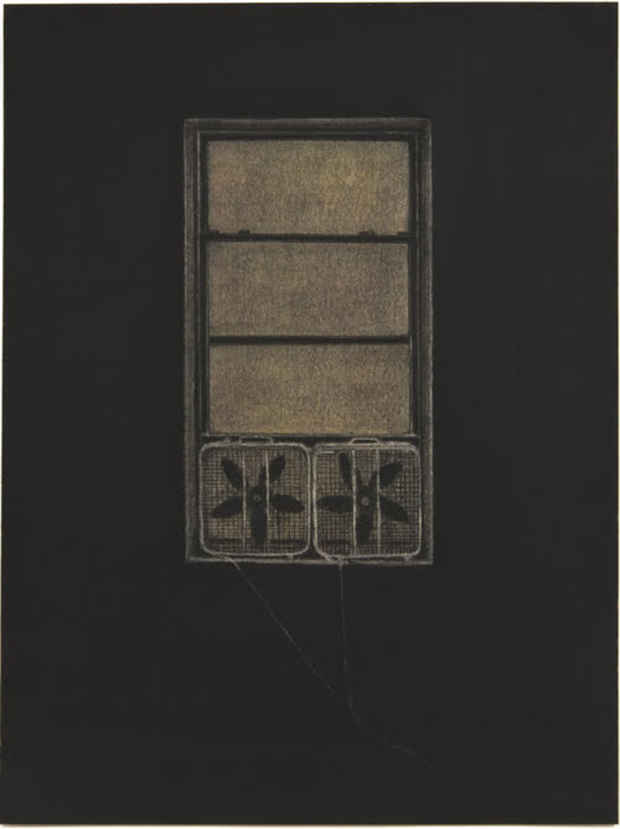Christopher Culver “O Fantasma”
Chapter NY

This event has ended.
Marx is not necessarily known for being a theorist of visual culture, but he was the first to uncover how capitalist society distorts our vision. He said that the dominant ideology produces an inverted image of social life “as in a camera obscura” and that commodity fetishism makes relations between people appear as though they are relations between things. Despite the advancement of visualization technologies, this warped way of seeing remains uncorrected. We have not pierced the world of shadows and it is in this world where Christopher Culver’s drawings reside. The works confront us with occluded images – phantom images that, for the most part, are scrubbed of human beings, but that still bear their traces. They constitute a laggard mode of documentation, less nostalgic than evidentiary, like one of those detectives from the movies who trails a genius psychopath and is repeatedly outwitted, arriving at the scene of the crime too late, in the wake of another grisly murder. Veiled in darkness, the features of this vacant terrain only become legible in the twilight zone between work and rest, when your gears are still turning and sleep evades you.
The drawings are based on snapshots that Culver took himself, though the camera also seems to exert its own pull, trawling for human subjects like a voyeur. Hanging unframed in the gallery, they relate back to process of enlarging, cropping, and cutting that occurs in the studio. And without protective glazing, the drawings inevitably collect dust through osmosis with the surrounding environment, which parallels how Culver’s meticulous application of charcoal and dry pastel slowly embeds the paper with pigment and gives it a moldy, bituminous finish.
Reification has been thought of in terms of opacity because it effaces and obscures relations between people. It could also be considered a form of (re)animation that saps life from humans and transmutes it into inanimate objects. Instead of Marx’s turning table, the box fan is the commodity that often comes alive in Culver’s drawings, such as when two fans sit atop a windowsill and their cords are seen tangled in a cute embrace. The effect of this doubling heightens our tendency to anthropomorphize. One also gets the sense that life goes on without us. In a different drawing, a flock of geese waddle along a road to nowhere. With the passage of time, more and more of us will be made into migrants as we are set adrift by capital’s vortex, and so the geese become mascots of this unmooring. Sentenced to a life of movement, they appear content to rest in puddles of mud.
—Matthew Grumbach
Christopher Culver (b. 1985 Miami, FL) lives and works in New York. He received his MFA from The University of Texas at Austin in 2013 where he studied at the School of Fine Arts and School of Architecture. Culver has had solo exhibitions at The Meeting, New York; A.D., New York; Redling Fine Arts, Los Angeles; Yautepec, Mexico City; and Queen’s Nails Annex, San Francisco. His work has been included in group exhibitions at Downs & Ross, New York; Et al. etc., San Francisco; Lomex, New York; and Page Gallery, New York, among others.
Media
Schedule
from September 10, 2021 to October 23, 2021